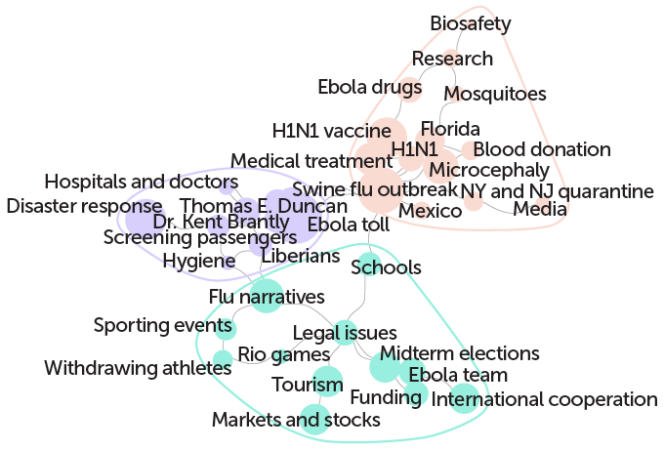CFPB supervision cuts: what they mean for consumers

CFPB supervision cuts decrease regulatory oversight, potentially leading to higher fees, less consumer protection, increased risks of predatory lending, and a decreased ability for consumers to resolve disputes with financial institutions.
CFPB supervision cuts are making waves in the financial world. Have you ever wondered how changes in oversight can impact your financial rights and protections? Let’s dive in to see what these cuts really mean for everyday consumers.
Understanding CFPB’s role in consumer protection
The CFPB, or Consumer Financial Protection Bureau, plays a vital role in safeguarding consumers in the financial sector. Understanding its responsibilities helps you realize how these protections impact your everyday financial decisions.
One of the core functions of the CFPB is to ensure that financial companies comply with regulations designed to protect consumers. This means they actively monitor these companies to prevent unfair practices and provide support to individuals who face issues.
Key Responsibilities of the CFPB
The CFPB has several important roles that contribute to consumer protection:
- Overseeing financial institutions to ensure compliance with legal standards.
- Educating consumers about their financial rights and options.
- Investigating consumer complaints against financial services.
- Promoting fair lending practices to ensure everyone has equal access.
These roles are crucial because many consumers may not be aware of their rights. By providing educational resources, the CFPB empowers individuals to make informed decisions.
This agency also plays a critical role in addressing complaints. If you have a problem with a bank or loan service, you can file a complaint with the CFPB. They will investigate the situation, working to resolve the issue. This function not only helps individual consumers but also encourages financial institutions to improve their practices.
The Impact of CFPB Regulations
Understanding the impact of these regulations can change how you think about financial products. With proper oversight, consumers can feel more secure using services like loans and credit cards.
Furthermore, the CFPB’s presence helps hold financial companies accountable. This means that any unfair practices can be challenged, protecting the rights of consumers everywhere.
In summary, the CFPB serves as a crucial defender of consumer rights in the financial industry, striving to create a marketplace where everyone is treated fairly and equitably.
Key changes from the CFPB supervision cuts
Significant changes are happening with the recent CFPB supervision cuts. These adjustments can reshape how the Bureau operates and affects various stakeholders in the financial sector, including consumers.
First, a primary focus of these cuts is on reducing the number of financial institutions under strict oversight. This means that some companies may not have to report certain consumer data, which could leave consumers with less information about their financial health.
Impacts of Reduced Oversight
When the CFPB removes its supervision from various institutions, several potential issues arise:
- Increased risk of unfair practices by financial institutions.
- Less transparency in the marketplace.
- Consumers may face more challenges in resolving disputes.
- Overall, diminished consumer protections in sensitive areas like loans and credit.
These shifts prompt concerns about how financial companies might operate. With fewer regulations, the likelihood of mismanagement or unfair treatment increases, making it essential for consumers to stay informed.
Moreover, the absence of stringent monitoring can lead to a rise in predatory lending practices. Without the CFPB’s watchful eye, consumers may find themselves in unfavorable situations, struggling with hidden fees or unfair terms.
Shifts in Consumer Support
As CFPB supervision cuts unfold, consumer support may also see changes. The Bureau’s ability to advocate for consumers diminishes if vital data is no longer collected. This gap can make it challenging for consumers to seek help or understand their financial options.
Additionally, organizations that assist consumers may struggle to adapt to the new landscape. Without the CFPB’s guidance, these groups might lack essential resources needed to empower individuals in their financial decisions.
Who will be affected by these supervision cuts?
The recent supervision cuts by the CFPB will impact a wide range of people and organizations. Understanding who will be affected is crucial in navigating these changes in the financial landscape.
First and foremost, consumers are the most vulnerable group. With reduced oversight, they may face a variety of challenges. Many consumers might find it more difficult to resolve disputes with financial institutions due to a lack of regulation.
Key Groups Affected
Several key groups will experience the effects of these supervision cuts:
- Financial Institutions: Banks and lenders may find themselves with fewer restrictions, which could alter their practices significantly.
- Consumers: Everyday individuals could experience diminished protections, leading to increased risks.
- Advocacy Organizations: Groups that support consumers may struggle to protect their interests without the CFPB’s backing.
- Regulatory Bodies: Other regulatory organizations will have to adapt to ensure consumers are still protected in the changing environment.
As financial institutions operate under fewer guidelines, some may take advantage of this newfound freedom. This can result in practices that might not always be in the best interest of consumers.
Moreover, those who rely on advocacy groups for support, such as low-income families or marginalized communities, might find their resources dwindling. These organizations often depend on the CFPB for data and support to fight for consumer rights.
Finally, other regulatory bodies will have to step up their efforts to fill the gaps left by the CFPB’s changes. This shift may lead to a fragmented approach to consumer protection, leaving many individuals unsure of where to turn for help.
Implications for financial institutions and consumers

The recent changes in supervision cuts by the CFPB have several serious implications for both financial institutions and consumers. Understanding these consequences is important for everyone involved in the economy.
For financial institutions, the cuts mean less regulatory pressure. Banks and lenders may feel free to adjust their practices without the usual scrutiny. This could lead to more innovative products, but it also raises concerns about whether these products serve the best interests of consumers.
Effects on Financial Institutions
As a result of the supervision cuts, financial institutions may experience:
- Increased Profit Margins: With reduced oversight, banks may introduce fees that were previously forbidden.
- Potential Risk-Taking: Less regulation can lead some institutions to take on riskier behaviors that may not align with prudent banking.
- Market Competition Changes: Smaller banks may struggle to compete with larger institutions that can take advantage of weakened regulations.
These factors can impact everything from loan availability to interest rates. Consumers must be on alert for changes in their financial services due to this shift.
On the consumer side, the implications are equally significant. With reduced oversight, individuals might find themselves facing challenges that were previously mitigated. For instance, consumers may encounter more hidden fees or less favorable loan terms.
Consequences for Consumers
Some of the potential consequences for consumers include:
- Decreased Consumer Protection: With less oversight, companies may engage in practices that can harm consumers.
- Higher Costs: Consumers could face increased fees and charges associated with financial products.
- Limited Resources for Disputes: Resolving issues with financial products may become more challenging.
It is essential for consumers to remain informed about these changes. Understanding the landscape helps individuals make better financial choices and advocate for their rights. Keeping track of how these implications play out can safeguard against potential pitfalls.
What consumers should watch for in the changes
As the CFPB implements its supervision cuts, consumers need to stay vigilant about how these changes might affect their financial lives. Understanding what to watch for is essential in navigating this evolving landscape.
One of the first things consumers should monitor is changes in fee structures. With less regulation, financial institutions may start introducing new fees or increasing existing ones. These could include higher account maintenance fees, transaction fees, or loan-related charges.
Key Areas of Concern
Consumers should keep an eye on several key areas:
- Loan Terms: Watch for shifts in interest rates and the introduction of unfavorable loan terms.
- Hidden Fees: Financial products may have added charges that were more regulated before the cuts.
- Customer Service: Changes in customer service responsiveness might occur, potentially making it harder to resolve issues.
- Advertising Practices: Be aware of misleading ads that could take advantage of reduced scrutiny.
In addition, consumers should evaluate their financial products frequently. This period presents a prime opportunity to reassess whether current banks, loans, or investment options still serve their best interests. Shopping around for better rates or terms could become crucial.
Staying informed about your rights is also vital during this transition. Understanding consumer protection laws helps individuals advocate for themselves, especially in situations where they might feel taken advantage of.
Community Resources
Utilizing community resources can provide support for consumers facing these changes. Many local organizations offer workshops, counseling, and resources aimed at educating consumers on navigating their financial options and rights.
By being proactive and informed, consumers can guard against potential pitfalls arising from the CFPB supervision cuts and continue making sound financial decisions.
Potential risks of reduced supervision
The recent reduced supervision by the CFPB brings several potential risks that can affect consumers and the financial landscape. It’s essential to be aware of these risks to protect yourself as changes unfold.
One significant risk is the possibility of increased mistreatment of consumers by financial institutions. With fewer regulations, companies may feel less accountable for their actions, leading to practices that could harm customers. For example, they might impose higher fees or offer less favorable loan terms.
Key Risks to Consider
Here are some of the major risks that consumers should keep in mind:
- Predatory Lending: Less oversight can lead to a rise in predatory lending practices. Borrowers may find themselves trapped in loans with high-interest rates and unfair terms.
- Hidden Fees: Financial institutions may start charging unexpected fees. These could be difficult to understand or avoid without proper monitoring.
- Loan Access: The quality of loans may decline, with some consumers being denied access to fair lending products, particularly those in vulnerable positions.
- Information Security: With fewer regulations, there is a risk that financial institutions may not adequately protect consumer data, increasing the chances of data breaches.
Moreover, the lack of guidance from the CFPB may lead to diminished consumer trust in financial institutions. When consumers feel unprotected, they might hesitate to seek help with their financial products or services.
Another area of concern is the impact on financial literacy. Reduced supervision often correlates with a decrease in consumer education initiatives. This can leave many individuals unaware of their rights or available resources, making them more vulnerable to exploitation.
Continued Vigilance
Consumers must stay vigilant, monitor financial transactions, and remain informed about their rights. It’s crucial to question any unexpected changes and seek clarification from financial institutions when needed. Understanding the potential risks associated with reduced supervision is the first step in ensuring a secure financial future.
Advocating for stronger consumer protections
Advocating for stronger consumer protections is crucial, especially in light of the recent CFPB supervision cuts. Consumers can play a significant role in pushing for policies that ensure their rights are upheld.
One of the most effective ways to advocate is through awareness and education. Consumers should educate themselves about their rights and the protections currently in place. Understanding existing laws helps individuals recognize when their rights are violated, empowering them to take action.
Ways to Advocate
Here are several key actions consumers can take to advocate for stronger protections:
- Contact Legislators: Reach out to local representatives to express concerns about consumer rights. Sharing personal experiences can illustrate the need for stronger protections.
- Join Advocacy Groups: Align with organizations focused on consumer rights. These groups often have resources and strategies to amplify your voice.
- Participate in Community Meetings: Engage in local discussions about consumer protection. Community input can influence government actions and policies.
- Raise Awareness on Social Media: Use platforms to share information about consumer rights and mobilize others to join the cause.
By taking proactive steps, consumers can contribute to a collective push for stronger protections. This response is especially necessary in a time when regulatory oversight may be declining.
Additionally, consumers should remain vigilant about their financial dealings. Not only should individuals understand their rights, but they should also hold financial institutions accountable for their practices. Reporting any unfair treatment or predatory practices to the appropriate authorities can help create a safer financial environment for everyone.
Collaborative Efforts
Building a coalition with other consumers can make a significant difference. When many voices unite, it is harder for policymakers to ignore the demand for change. Education and community involvement are powerful tools in advocating for a fair financial system that benefits all.
Ultimately, advocating for stronger consumer protections is about ensuring that everyone has access to fair and transparent financial services. This effort can create a more equitable marketplace where consumers feel safe and supported.
Future outlook on CFPB’s regulatory approach

The future outlook on the CFPB’s regulatory approach is an important topic for consumers and financial institutions alike. As changes unfold, understanding potential directions and implications will help individuals and organizations prepare.
One possibility is that the CFPB may shift its focus to more targeted regulation. This means they could prioritize specific areas or sectors that require immediate oversight. Such an approach may streamline resources but could leave some consumer protections vulnerable as others are emphasized.
Potential Changes to Expect
Here are some scenarios that might emerge in the future:
- Increased Flexibility: The CFPB may implement a more flexible regulatory framework, adapting to market changes more quickly.
- Development of New Guidelines: As consumers face new challenges, the CFPB might develop updated guidelines on issues like digital lending or fintech innovations.
- Greater Collaboration: The Bureau may foster closer relationships with state regulators and consumer advocacy groups to create a more comprehensive protection system.
Additionally, as consumer needs evolve, the CFPB could increase its educational efforts. By focusing on consumer awareness and education, the Bureau can empower individuals to make informed decisions about their financial options.
However, a significant concern remains regarding the potential reduction in direct oversight of financial institutions. The possibility of a lighter regulatory touch might lead to risks, including the rise of predatory practices or fewer protections for vulnerable consumers. Therefore, consumers must stay proactive in monitoring these changes and advocating for their rights.
Long-Term Implications
Ultimately, the long-term implications of the CFPB’s revised approach will shape the financial landscape significantly. As consumers brace for these changes, they should maintain an active role in discussions surrounding regulatory practices. The balance between promoting innovation and ensuring consumer protection will be critical in determining the Bureau’s effectiveness moving forward.
Engagement from consumers, financial institutions, and advocacy groups will be vital to fostering an environment that prioritizes fairness and transparency in financial services.





